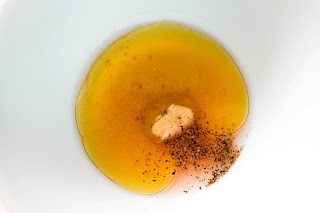In the end, this is an amalgamation of about 4 different recipes that I found interesting. I'm not including where I found them, because that would be just too confusing, as well as perhaps insulting to the creators of them. The coconut rice is something I've been working on for years, and finally stumbled upon a preferred method (at least in our house) this past year. It's very easy to riff off of by incorporating a slew of Asian, Middle Eastern, or Indian interpretations. I'm pretty aware these dishes aren't exactly 'authentic', but they were insanely good and left us with hardly any leftovers. The rice never even made it to the tupperware.
INGREDIENTS
for the chicken:
2 1/2 - 3 lbs boneless,
skinless chicken thighs
1 cup low or whole fat plain
yogurt
4 cloves garlic, finely minced or
grated
2 inch piece fresh ginger, grated
1 1/2 tsp ground cumin
1 1/2 tsp ground coriander
1 tsp kosher salt
1 tsp coarse ground pepper
for the rice:
1 1/2 cups basmati rice, rinsed well (or not - if you don't mind sorta sticky rice, don't rinse)
1 1/2 tsp turmeric
3 large or 5 small scallions, sliced on a diagonal
1/2 - 2/3 cup raw unsalted cashews
1 1/2 cup water
1 can full fat coconut milk
1 tsp kosher salt
1 Tbsp canola or coconut oil
for the sauce:
1 28 oz can crushed tomatoes
1 medium sweet onion, finely chopped
3 Tbsp canola or coconut oil
3 cloves garlic, finely minced or grated
1/2 inch piece ginger, grated
1 jalapeno, seeded and finely minced
1 Tbsp double strength tomato paste
1 Tbsp garam masala
1 tsp coriander
1/2 tsp allspice or ground clove
2 tsp sweet curry powder
1 can full fat coconut milk
salt to taste
1/4 - 1/2 cup coarsely chopped cilantro
Mix together the yogurt and the other spices for the chicken in a large bowl. Place the chicken thighs into the yogurt mixture, ensuring that each one gets well coated. Cover with plastic wrap and keep in the refrigerator to marinate for at least one hour, or up to overnight.
Add 1 Tbsp coconut or canola oil to a medium pot and heat over medium. Pour in the rinsed (or not) rice and stir frequently till the grains are nearly opaque. Add the turmeric, scallions, cashews, water, salt and coconut milk. Stir well and crank heat to high. When rice comes to a boil, give it another thorough stir and cover, dialing heat back to low. Cook for 18 minutes, then remove from heat and let the rice continue cooking (still covered - don't remove the lid!) for 10 more minutes. Fluff with a fork before serving.
While the rice is simmering away, prepare the sauce. Add the 3 Tbsp oil to a dutch oven or large heavy bottomed pot over medium high heat. Add the onion and cook till softened, 8 - 10 minutes. Add the jalapeno and cook for a couple more minutes, stirring occasionally. Add the garlic, ginger, garam masala, coriander, allspice and curry. Stir frequently till spices start to bloom, about 30 seconds. Add the tomatoes and coconut milk. Simmer for about 10 minutes on medium low. Add cilantro and salt to taste.
Once the rice and sauce are done, it's (finally) time to cook the chicken! Place a cooling rack on a foil or silpat lined cookie sheet, and spray the rack down well with canola oil. Turn the broiler on high, and place an oven rack in the 2nd to the top slot. Remove the chicken from the yogurt and place on rack, about an inch or 2 apart from each other. Pour the remaining yogurt marinade into the sauce and let simmer while the chicken cooks. Place the chicken under the broiler and cook on each side for about 5 minutes, until a nice char develops. Remove from oven and cut into large chunks and toss them into the sauce, as well as any pan drippings. If the chicken is a little underdone, just keep the heat on low under the sauce and leave it for a few minutes to finish cooking.
Serve the chicken with plenty of sauce and lots of fresh cilantro over the rice. Not in the mood for rice? Sop up the amazing sauce with some naan bread.
































